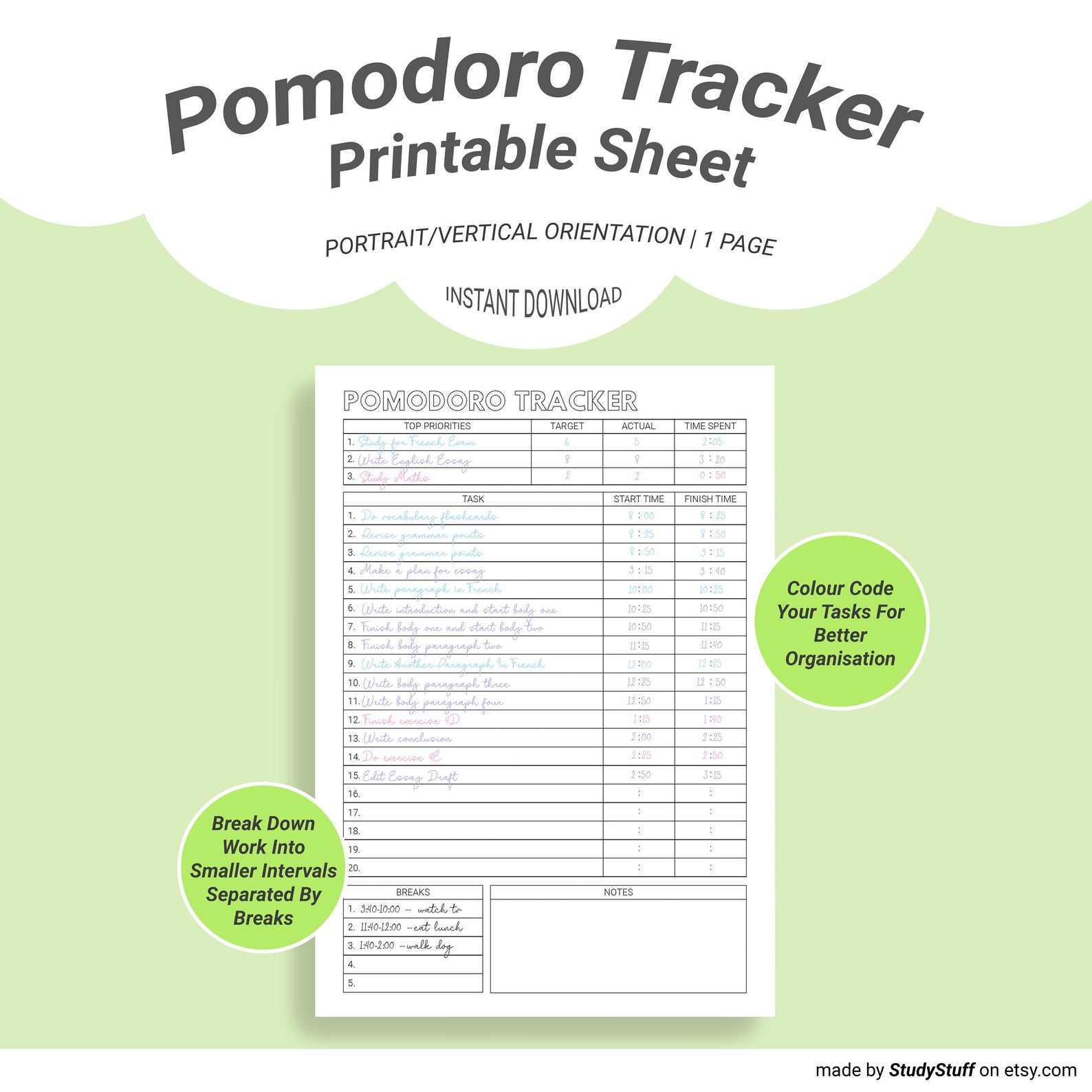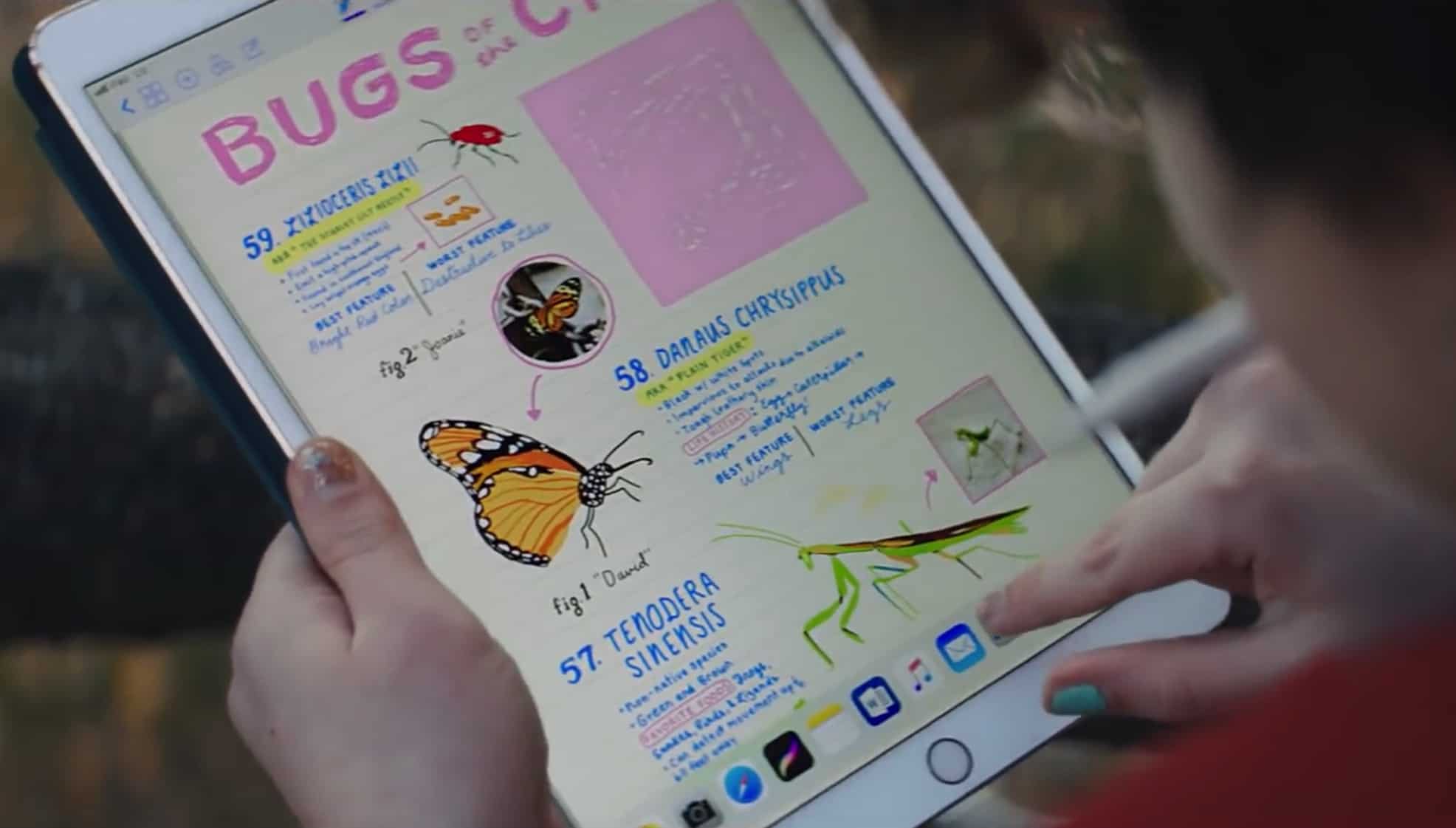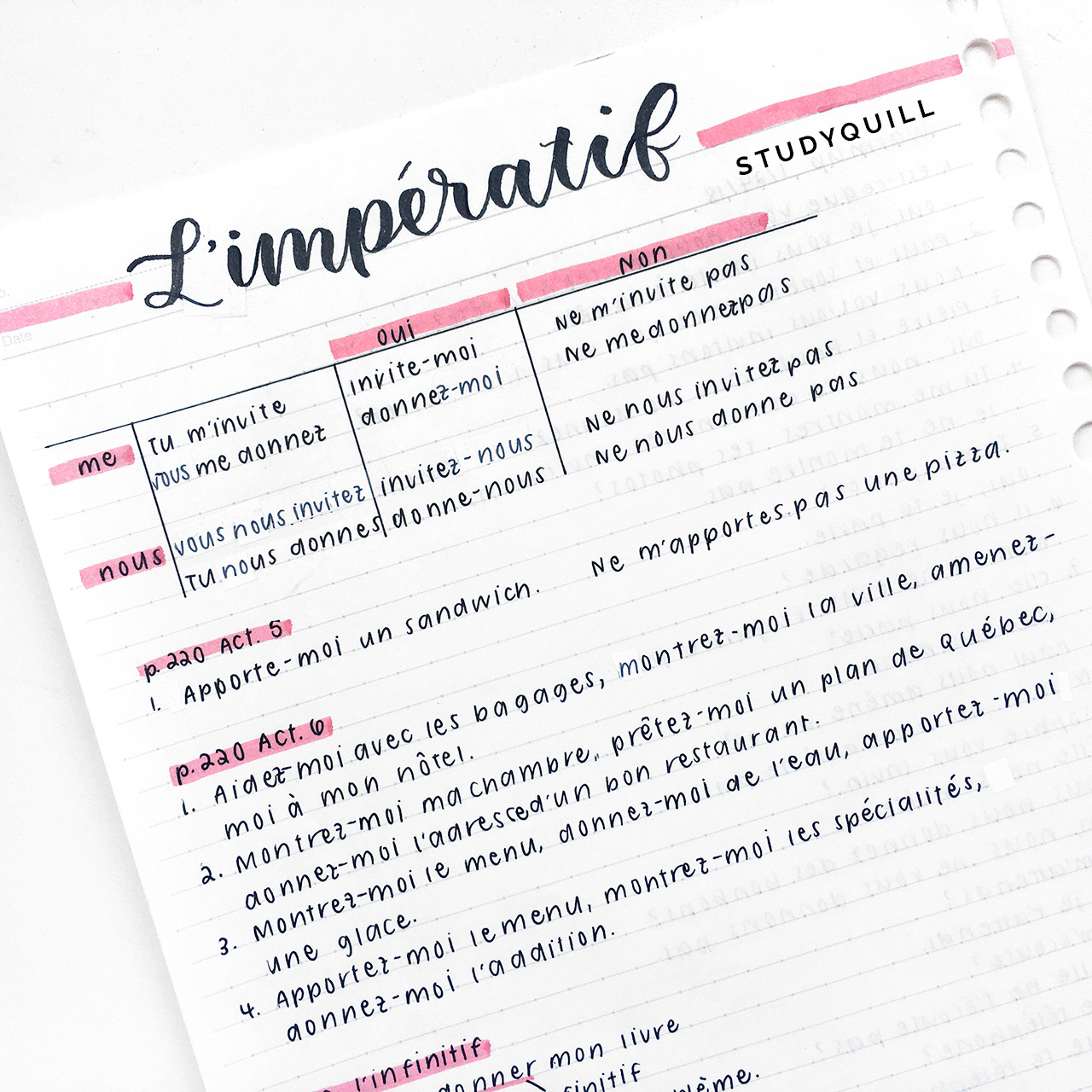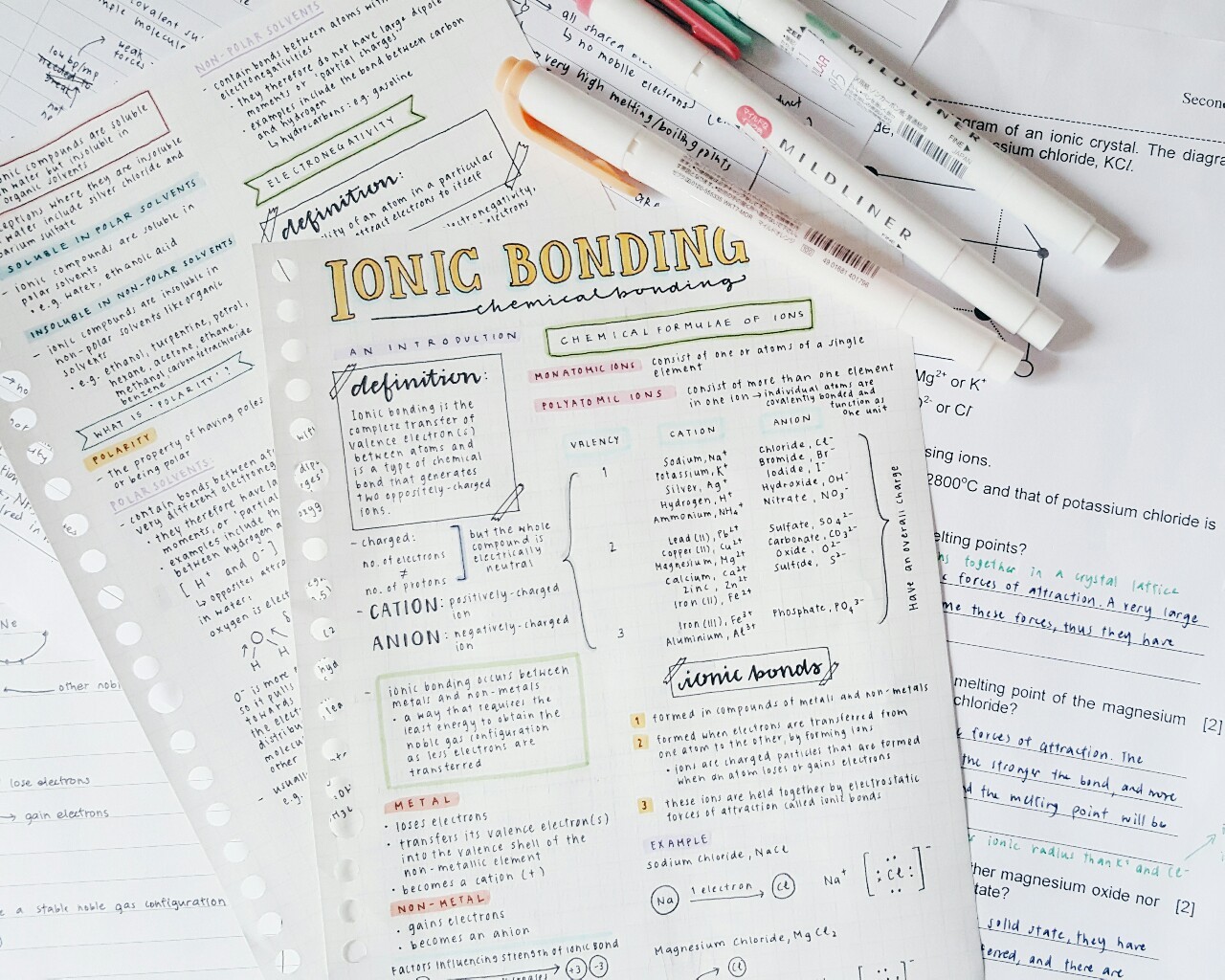
The Ultimate Guide To The Pomodoro Study Technique
An Overview of The Pomodoro Study Technique
In the 1980s Francesco Cirillo developed a time management focused method of studying called the pomodoro technique while he was at university. The technique uses a timer to break down tasks into smaller chunks, usually 25 minutes in length but there can be variation. Between each 25 minute study session there is a study break of 3 to 5 minutes and after completing four ‘poms’ (terminology for a pomodoro session) you can have a longer break of 20 to 25 minutes.
Why pomodoro? Isn’t that tomato in italian?
Fun fact the reason why the Pomodoro technique is called the pomodoro technique is because Francesco Cirillo used a tomato shaped kitchen timer to time himself studying. A kitchen timer is always an option for you but nowadays with better technology you can use an online timer or a phone timer. There are even websites dedicated to pomodoro timing such as tomato-timer.com.
STOP!
Before you read on any further!
Check out my POMODORO STUDY TRACKER TEMPLATE as I refer to it throughout the article.
All you need to do is click on the image below!

A Step-by-Step Guide To The Pomodoro Study Method
The pomodoro study method is super simple, in fact there are only 5 steps to it.
- Decide on 3 overarching tasks you are going to complete today
- Break down these tasks into subtasks that you can achieve in 25 minutes each. You can write down each sub-task on a printable pomodoro study tracker.
- Put 25 minutes on your timer of choice, write down your start time and start studying with full focus, aiming to finish the task just before the timer goes off.
- Work on this subtask until the timer goes off. Write down your finish time. Don’t worry if you haven’t finished your task, you can always finish it in the next 25 minute study session.
- Have a study break. Between each study session you get a short break of 3 to 5 minutes and after completing 4 pomodoro sessions you get a longer break of 20 to 25 minutes.
What To Do During A Pomodoro Break
There are two types of pomodoros breaks: short (3 to 5 minutes) and long (20 to 25 minutes). The purpose of the short break is to refresh your mind and get yourself ready for another 25 minutes of focus. On the other hand, the long breaks are there for motivation and to act as a reward for your hard work.
What To Do During A Short Break
- Walk to a different room or at least away from your desk
- Rehydrate if you haven’t been drinking water while studying
- Do some light exercise such as stretching, jumping jacks or running on the spot to get your blood flowing. It is said that exercise improves your concentration.
- Do NOT go on your phone. This is a gigantic distraction and you will definitely spend more than 5 minutes on it.
Long Break Ideas
- Do some exercise
- Take your dog on a walk
- Do some journaling. Focus on the positives that have happened today and write down things that you are grateful for.
- Do a bit of fun language study. I really like this website/app called lyricstraining where you can fill in the blanks to foreign language songs. Also if you are into language learning I highly suggest that you check out my digital language learning planner!
- Do some painting or drawing
- Watch a short youtube video (but have self control, don’t watch too many!)
Why The Pomodoro Method Is So Effective
#1 It Forces You To Focus On A Single Task (And Actually Get It Done!)
The main reason why the pomodoro method is so effective is because it forces you to focus on a single task. The reduced time to complete a task means that you can’t waste time on other menial tasks or distractions.
#2 It Creates A Sense Of Urgency
The ticking of the timer while you study creates a sense of urgency which makes you work a little bit faster. The reduced time limit to do work also creates an incentive to achieve it.
#3 It Forces You To Form Mini Study Goals
If you use my pomodoro tracker template (can be used as a printable or a template on an iPad), you can write down exactly what you want to achieve in your pomodoro study sessions. The act of making these 25 minute study goals and having them in physical writing will increase your likelihood of actually achieving them and also will increase your focus during your study sessions as you will know exactly what to do. Also the breaks between each session acts as a motivator to complete your study sessions.
#4 The Pomodoro Method Increases Your Productivity
You have probably heard of Parkinson’s Law before: “work expands to the time available.” If you have a whole day to complete a task, you will take the whole day to complete it. But if you reduce the amount of time you have and give yourself a deadline you will complete the task in that shorter amount of time. That is ultimately why the pomodoro study technique is so effective because it forces you to achieve your goals in only 25 minutes.
#5 You Develop A Sense Of Accomplishment
Do you know how satisfying it is to tick off the final task on your to-do list and see everything you have accomplished?
It is the same principle for the pomodoro technique. I highly recommend using a printable pomodoro tracker template as it especially satisfying ticking off tasks from a physical piece of paper.
Variations Of The Pomodoro Technique
You don’t have to follow the strictly 4x 25 minute sessions and 5 minute breaks in between each. Here is a list of common variations of the pomodoro study method:
- 30 minute pomodoro sessions. Some people prefer this as the amount of time that you spent studying is easier to count up.
- 90 minute pomodoro sessions. Some people like to do 90 minute sessions as it is the average length of a natural concentration cycle.
Should I Use A Printable Pomodoro Template or An App?
It is up to personal preference whether you use a printable pomodoro template or an app. I am probably a little bit biased towards using a printable template but I have compiled a pros and cons list of both methods so you can make your own decision 🙂
Pomodoro App
| Pros | Cons |
| Built in timer | Very distracting having your phone on your desk |
| Lots of different apps to choose from e.g. Flora, Focus, Flipd, Flat Tomato and many more. | Not all apps are free |
Pomodoro Template
| Pros | Cons |
| No phone = no distractions | No built in timer |
| Physically writing out your goals makes you more likely to achieve them | You have to manually add up the time you have spent studying at the end of the day (however this is a good bit of maths practice) |
Before You Go!
Are you passionate about language learning?
Be sure to check out my article on the EASIEST way to learn a language by yourself! and my Digital Language Learning Planner!
If you take notes using your iPad, you need to know these 12 iPad note taking tips! They will make …
There are many different note taking methods that can work well for language learning. To take effective notes for language …
To take pretty notes you need to firstly choose a consistent colour scheme. Next you should draw an eye catching …
To take notes on a PDF on an iPad you need to use a note taking or PDF reading app …
To get motivated to do school work one should set SMART goals, work in a motivating environment, break large projects …
To take aesthetic notes one needs to choose a consistent colour scheme, use eye catching titles and headers, invest in …






